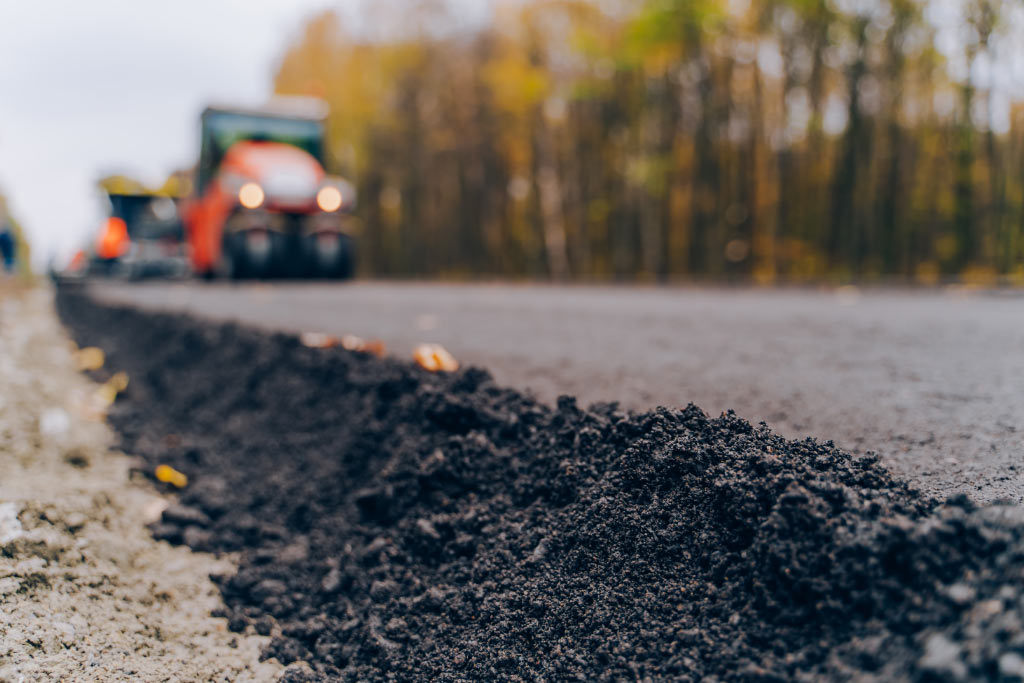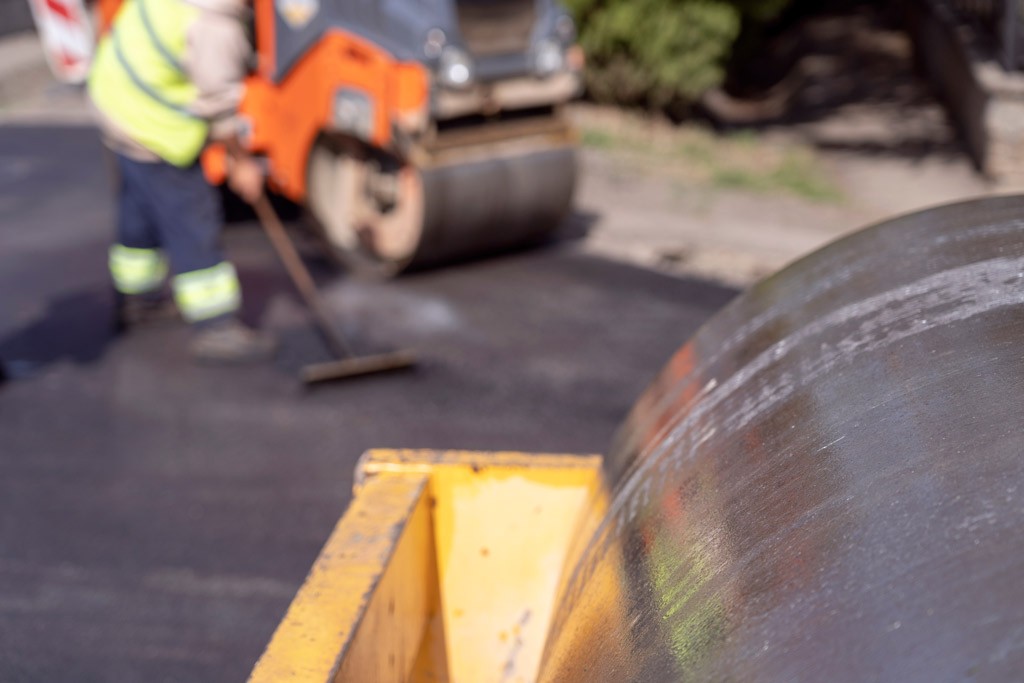This article explores the minimum temperature requirements for laying asphalt, emphasising that it should be at least 10°C (50°F) and rising for optimal results. Temperatures below this threshold can compromise the compaction and curing processes crucial for durable asphalt surfaces. Credit: ETI Temperature Blog The minimum temperature for laying asphalt is 10°C (50°F) and rising. Temperatures below this can hinder proper compaction and curing of the asphalt. It’s recommended to have temperatures of at least 15°C (59°F) for best results. As experts in asphalt installation, we recommend waiting for temperatures of at least 15°C (59°F) before laying asphalt. While it’s possible to lay asphalt at 10°C (50°F), the lower temperatures can negatively impact compaction and curing. For best results, only lay asphalt when ambient and subgrade temperatures are within the ideal 15-30°C (59-86°F) range. This helps ensure proper installation and longevity of the asphalt. Asphalt is a popular material for paving roads, driveways, and parking lots. But what’s the lowest temperature you can lay asphalt? There are a few factors to consider. The ideal temperature range for asphalt paving is 20-30°C (70-86°F). This allows the asphalt mix to be workable and properly compacted. However, paving can still be done at lower temperatures with care. Here are some minimum temperature guidelines: The key is to have dry, warming conditions during paving. If temperatures drop too low, the asphalt will cool and harden too quickly before it can be properly compacted. Paving contractors need to closely monitor weather forecasts and only lay asphalt during optimal temperatures for quality installation. When it comes to asphalt paving, temperature is crucial for proper installation. As we’ve covered, the ambient temperature should be at least 15°C and rising. The temperature of the asphalt mix itself is also important. Hot mix asphalt needs to be between 135-165°C when laid. This high temperature keeps the asphalt pliable and workable for spreading and compacting. As the mix cools, it becomes stiffer and more viscous. Ideally, compaction should be completed before the temperature drops below 80°C. The mix needs to retain some heat to be properly compacted. If it cools too much, the asphalt will be too hard to compact fully. Wind speed is another factor. High winds will accelerate the cooling of the asphalt. Paving should be avoided if winds exceed 16 km/h. In summary, here are the key asphalt temperature requirements: Monitoring temperatures and weather conditions closely allows asphalt to be paved successfully within the right temperature range. Proper temperatures are crucial for workability, quality, and durability. Credit: ETI Temperature Blog We’ve covered the minimum temperature requirements, but what is the ideal temperature range for asphalt paving? There are a few factors to consider. The ambient air temperature should be 20-30°C for best results. This warmer range allows the asphalt to retain heat longer through the paving and compaction process. For the hot mix asphalt itself, the optimal temperature for paving is 150-160°C. This hotter range provides maximum workability for spreading and finishing the asphalt mat. Compaction should be completed with the asphalt above 90°C. This ensures the mix is still warm and pliable enough to be fully compacted. Below 90°C, it may be too stiff to compact properly. At the same time, you don’t want the asphalt to be too hot during compaction above 110°C. Overly hot asphalt can become unstable. The ideal wind speed is less than 8 km/h. Higher winds will quickly cool the asphalt before compaction is complete. In summary, here are the optimal temperature conditions: Careful monitoring and control of temperatures allow you to achieve excellent results within the optimal paving temperature range. Once asphalt is paved, it starts cooling immediately. The rate of cooling depends on several factors. Ambient temperature has a major impact. On hot sunny days, asphalt will retain heat longer compared to cool overcast conditions where it can lose heat rapidly. Wind speed is another critical factor. Breezy conditions will accelerate cooling, while calm winds allow the asphalt to stay hotter for a longer period. The asphalt mat thickness also matters. Thicker lifts will hold heat better than thin layers. Compaction is easier to achieve with a thicker hot mix before it cools too much. The type of base material underneath can affect cooling too. Warm bases like cement-treated or asphalt bases retain heat in the asphalt overlay better than cold granular bases. Preventing quick cooling is crucial for proper compaction. Once the temperature drops below 90°C, compaction becomes difficult and density is harder to achieve. Paving crews need to work efficiently to finish compaction before the asphalt cools excessively. Monitoring temperatures and adjusting operations is key. Proper temperature management during paving and compaction results in quality, long-lasting asphalt with excellent performance characteristics. Hot mix asphalt (HMA) is composed of aggregate and asphalt cement. The aggregate provides the strength and structure, while the asphalt cement binds it all together. Aggregates make up over 90% of HMA by weight. Crushed stone, gravel, and sand of various sizes are blended at the asphalt plant to meet job specifications. Asphalt cement is a dark brown or black petroleum product that acts as glue. Just 5-10% asphalt cement content is needed in the mix. At the plant, aggregates are dried and heated to 300-350°F. Liquid asphalt cement is added and mixed thoroughly to coat the aggregates completely. The resulting HMA must be transported quickly and paved at temperatures no lower than 280°F. Compaction must be completed before the mix cools below 175°F. The properties of the aggregates and asphalt cement can be customised to produce mixes optimised for specific applications, traffic levels, and climate conditions. With good designs and proper construction practices, HMA provides durable, high-performance pavements with smooth riding surfaces. The minimum temperature to lay asphalt is 10°C (50°F) and rising. However, 15-20°C (59-68°F) is ideal. Yes, tarmac can be laid in cold weather in the UK as long as temperatures are above 10°C (50°F) and rising. It’s recommended to lay tarmac when temperatures are 15°C (59°F) or higher. The ideal temperature range for laying asphalt is 20-30°C (68-86°F). Temperatures should not fall below 10°C (50°F). The acceptable temperature range for laying asphalt is 15-30°C (59-86°F). Temperatures below 15°C (59°F) are not recommended. Asphalt can be laid in cold weather, but there are ideal temperature ranges that should be followed. The minimum temperature for laying asphalt is 10°C (50°F) and rising. However, temperatures of 15-30°C (59-86°F) are recommended for proper compaction and curing. Key factors are having the subgrade and asphalt itself within the proper temperature ranges.
What Is the Minimum Temperature for Laying Asphalt?

Key Points
Our Opinion
Temperature Requirements for Asphalt Paving
Why Temperature is Crucial for Asphalt Paving
Optimal Temperature for Installing Asphalt

Asphalt Cooling
Hot Mix Asphalt
FAQ
What is the lowest temperature you can lay asphalt?
Can you lay tarmac in cold weather in the UK?
What is the temperature range for asphalt in Celsius?
What is the acceptable temperature for asphalt?
Conclusion
